Sarah Ward's Blog, page 20
January 25, 2016
Review: Tim Baker – Fever City
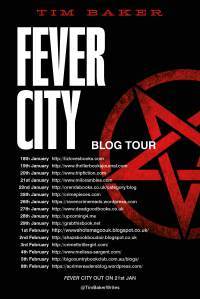 It’s my turn today on the blog tour for Tim Baker’s excellent debut novel, Fever City. Conspiracy theories surrounding the shooting of JFK is an area that continues to fascinate and it has been mined with considerable skill by this author. Fever City, opens with the kidnapping of the son of one of America’s richest men. Nick Alston, an LA private detective is hired to find the boy but finds competition in Hastings, a mob hitman who is also hunting the child. Decades later, a journalist is looking at the conspiracy theories of the fifties and sixties in relation to JFK’s shooting. He soon discovers that there are links with his own family and that secrets still extend into the highest echelons of US society.
It’s my turn today on the blog tour for Tim Baker’s excellent debut novel, Fever City. Conspiracy theories surrounding the shooting of JFK is an area that continues to fascinate and it has been mined with considerable skill by this author. Fever City, opens with the kidnapping of the son of one of America’s richest men. Nick Alston, an LA private detective is hired to find the boy but finds competition in Hastings, a mob hitman who is also hunting the child. Decades later, a journalist is looking at the conspiracy theories of the fifties and sixties in relation to JFK’s shooting. He soon discovers that there are links with his own family and that secrets still extend into the highest echelons of US society.
Split timelines can sometimes be problematic for a reader but not when they’re as skilfully handled as in Fever City. All three narratives are clearly defined, partly due to the different writing styles changing from first to third person and past to present tense. It works very well. The writing is excellent which, along with the pull of the plot, meant that I read the book very quickly.
Although in part a political thriller, there is also a song focus on family ties and the legacy they leave behind. Fever City is a strong debut by a writer with a confident voice. I’m sure we’ll be hearing plenty more from Tim Baker.
** Giveaway** To win a hardback copy of Fever City along with a signed copy of my own novel, In Bitter Chill, also published by Faber and Faber, please fill in your name and details in the contact form below. Your e-mail address will only be used for this competition and to receive my monthly newsletter.
[contact-form]


January 22, 2016
Review: Eva Dolan – After You Die
Crimepieces’ guest reviewer, Rachel Hall, gives her opinion on Eva Dolan’s latest book which has been garnering rave reviews everywhere.
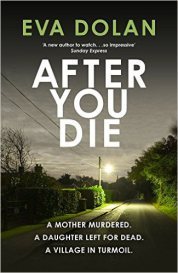 When Eva Dolan stormed onto the crime fiction market in 2014 she struck a chord with police procedural fans everywhere. With the introduction of DI Zigic and DS Ferreira who head up the Peterborough Hate Crimes Division, here was a series set to explore and exploit the differences which polarise us all. Timely, with a keen eye on contemporary politics Dolan cast her unremitting eye on rising racial tension in an age where austerity predominates and immigration and human trafficking are rife. Authentic and punchy with an edgy feel, she explored the darker elements of a modern day society that so many other authors fear to tread.
When Eva Dolan stormed onto the crime fiction market in 2014 she struck a chord with police procedural fans everywhere. With the introduction of DI Zigic and DS Ferreira who head up the Peterborough Hate Crimes Division, here was a series set to explore and exploit the differences which polarise us all. Timely, with a keen eye on contemporary politics Dolan cast her unremitting eye on rising racial tension in an age where austerity predominates and immigration and human trafficking are rife. Authentic and punchy with an edgy feel, she explored the darker elements of a modern day society that so many other authors fear to tread.
Whilst After You Die explores a slightly different element of harassment in the form of disability hate crime, all of the key components of a Zigic and Ferreira novel remain and this third outing is undoubtedly the most emotionally charged read of the series so far. This is the first mass market crime novel with the bravery to tackle disability hate crime head on that I have come across and, with her ever sensitive eye, it could be in no safer hands. Eva Dolan deserves top marks for her treatment of the subject matter and her exploration of the prevailing attitude towards the disabled and the related hate crimes amongst society is spot on.
Moving away from their more familiar stomping ground of Peterborough to the quiet village of Elton, Ferreira was called the previous summer to the house of single mother Dawn Prentice after she made several calls logging harassment complaints. As the mother of a severely disabled sixteen year old, Holly, Dawn detailed the harassment that the family were experiencing. With little substance to prove any of these complaints and no obvious suspect, Ferreira put the incidents to bed. When a gas leak in the house next door causes damage to Dawn’s home and forced entry becomes necessary, Dawn is found with multiple stab wounds clearly having bled to death and Holly has been left to die helpless upstairs.
Was Ferreira negligent in not taking Dawn’s accusations more seriously? Ever keen for an opportunity to beat herself up she is well aware that her own prejudices and uncomfortable attitude toward the severely disabled Holly clouded her approach to this case. When the question of who was the real target of this crime becomes central to making any headway, it becomes apparent that Ferreira spent little time speaking with the daughter on her initial visit to the house and the duo are forced to delve further into the lives of the family. Setting high standards for herself regarding her career, Ferreira is niggled by the feeling that perhaps she was was too quick to brush this matter aside and goes all out in seeking justice for the victims. Crucially, if Dawn were the intended victim did the killer even know Holly was upstairs?
Touching upon wider issues such as the right to die campaign and the life of a full time carer, this novel packs a weighty punch. Also central is the role of social media in the current age with both Dawn and Holly living rather fuller lives online. In proving that this case warrants being approached as a hate crime, Zigic and Ferreira are up against a ticking clock with DCS Riggott keen to hand the matter over to the remit of CID. With a leading suspect well known to another department of the force who seem keen to prevent contact, we soon learn that plenty of local residents have something to hide.
As with Dolan’s previous novels Long Way Home and Tell No Tales, the obvious rapport of the central detectives is pivotal to the success of this series, with Zigic the calming influence on his sometime rash and mouthy sergeant. With compelling back stories and interesting home lives the fact that they are so realistic and wonderfully humane, unfettered by the common stereotypes which abound in crime fiction detectives adds to their appeal.
Retaining the snappy dialogue and the hard-hitting subject matter which made the first two novels so compelling, this is Eva Dolan at her brilliant best. With a compulsive and addictively dark storyline, After You Die treads new ground in the crime fiction genre. Delivering plenty of twists along the way, Dolan draws her readers in with her irresistibly fluid writing style and never lets up from the off. Spending a few hours in the company of Zigic and Ferreira is a thrill ride readers won’t forget in a hurry and an unadulterated pleasure. Once again, Eva Dolan nails it with an emotive plot which strikes at the very heart of your emotions. Setting a high standard for the rest of the series Zigic and Ferreira clearly have plenty more cases in them and I await future outings with bated breath. Eva Dolan is a name every crime fiction fan needs to know.


January 18, 2016
Review: Joyce Carol Oates – Jack of Spades
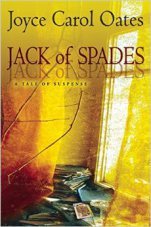 I’m currently trying to intersperse my crime fiction reading with something a little bit different. I love mainstream crime novels but there’s so much out there it can be hard to decide what to read. Jack of Spades by Joyce Carol Oates caught my eye because she’s more famous as a writer of award-winning literary fiction. The lines between what is literary fiction and genre novels has, of course, been blurring for years. But in Jack of Spades, Oates has written a deceptively straightforward thriller that was a delight to read.
I’m currently trying to intersperse my crime fiction reading with something a little bit different. I love mainstream crime novels but there’s so much out there it can be hard to decide what to read. Jack of Spades by Joyce Carol Oates caught my eye because she’s more famous as a writer of award-winning literary fiction. The lines between what is literary fiction and genre novels has, of course, been blurring for years. But in Jack of Spades, Oates has written a deceptively straightforward thriller that was a delight to read.
Andrew J Rush is a well-known and commercially successful writer of mystery novels. He and his wife are well-respected in the local community and he is a generous benefactor to the arts. However, unbeknown to his family and publishers, Andrew also writes dark masochistic novels under the pseudonym, Jack of Spades. When, one day, a court order arrives accusing him of plagiarism, Andrew turns to alter-ego to plot his survival.
This is a slight book, only 224 pages, but perfectly suits the narrative. There are Jekyll and Hyde references: the urbane Andrew who professes outrage at the impending lawsuit and the dark Jack whose initial fight to maintain his reputation sparks a lust for killing. The crime element to the book isn’t particularly unusual but, perhaps with a nod to Stephen King, it’s Andrew’s descent into madness and the impact it has on his bewildered family that is so memorable.
Jack of Spades is something a bit different. Impeccably written, of course, it explores the nature of creativity and literary jealousy. There’s a splinter of ice in many writers and Oates not only recognises this but tests the extremes people will go to protect their hidden lives.


January 10, 2016
Scandi Crime Fiction Round-Up
Much of my reading over the Christmas period was Scandinavian focused as I caught up on eligible entries for the 2016 Petrona Award that we’ll be awarding in May. There were some favourite authors in the pile and I was impressed by the way in which these three writers in particular continue to write high quality and interesting mysteries.
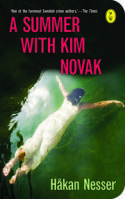 Håkan Nesser’s series featuring Van Veeteren is one of my favourites. A Summer with Kim Novak is a standalone novel different in tone and narrative style which is set in the early sixties. Fourteen-year-old Erik is obsessed with Ewa, a teacher who resembles Kim Novak. When a tragedy occurs it’s another twenty-five years until Erik’s memories unpick the events leading up to the ‘incident’. It’s a beautiful novel. There have been two translations by Saskia Vogel which I fear may have delayed the impact of the book in the UK market. I thought the first translation fine but I waited until the Christmas period to re-read the new translation. It’s different but still evokes the memories of a long hot summer and a period of lost innocence.
Håkan Nesser’s series featuring Van Veeteren is one of my favourites. A Summer with Kim Novak is a standalone novel different in tone and narrative style which is set in the early sixties. Fourteen-year-old Erik is obsessed with Ewa, a teacher who resembles Kim Novak. When a tragedy occurs it’s another twenty-five years until Erik’s memories unpick the events leading up to the ‘incident’. It’s a beautiful novel. There have been two translations by Saskia Vogel which I fear may have delayed the impact of the book in the UK market. I thought the first translation fine but I waited until the Christmas period to re-read the new translation. It’s different but still evokes the memories of a long hot summer and a period of lost innocence.
Antti Tuomainen writes beautifully written mysteries and his previous book The Healer had a haunting quality to it. Dark as my Heart has a strong 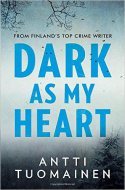 protagonist in Aleksi whose mother disappeared one October day when he was thirteen. Convinced that she was killed by millionaire Henrik Saarinen, the now adult Aleksi takes a job as a handyman at Saarinen’s estate to discover what happened to his mother. The book is an unsettling mystery with readers unsure which characters to trust. The darkness of the narrative is reflected in the bleakness of the landscape and it was perfect winter reading. The translation is by Lola Rogers.
protagonist in Aleksi whose mother disappeared one October day when he was thirteen. Convinced that she was killed by millionaire Henrik Saarinen, the now adult Aleksi takes a job as a handyman at Saarinen’s estate to discover what happened to his mother. The book is an unsettling mystery with readers unsure which characters to trust. The darkness of the narrative is reflected in the bleakness of the landscape and it was perfect winter reading. The translation is by Lola Rogers.
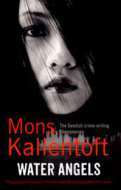 I always look forward to the latest offering in the series by Mons Kallentoft featuring detective Malin Fors. She’s a grimly realistic detective and the short chapters and choppy narrative make for an usual read. Water Angels, the sixth book in the series, has Fors investigating the murder of a couple and searching for her missing five year old daughter. It’s an interesting mystery and Malin is still a fascinating protagonist. The translation is by Neil Smith.
I always look forward to the latest offering in the series by Mons Kallentoft featuring detective Malin Fors. She’s a grimly realistic detective and the short chapters and choppy narrative make for an usual read. Water Angels, the sixth book in the series, has Fors investigating the murder of a couple and searching for her missing five year old daughter. It’s an interesting mystery and Malin is still a fascinating protagonist. The translation is by Neil Smith.


January 4, 2016
Review: Jane Casey – After the Fire
This is the first post from guest reviewer, Rachel Hall. I met Rachel at the end of last year and she’s an avid reader of crime fiction . She’s agreed to write a monthly guest review and, as you can see, she’s an excellent writer. I hope you enjoy her monthly posts.
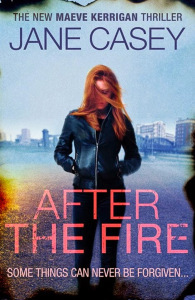 My first introduction to DC Maeve Kerrigan and she made quite an impression. In the sixth outing of the series Maeve is part of the murder squad investigating a devastating fire in a tower block on the notorious Maudling Estate in North London. From the outset the estate presents a bleak and unappetising picture
My first introduction to DC Maeve Kerrigan and she made quite an impression. In the sixth outing of the series Maeve is part of the murder squad investigating a devastating fire in a tower block on the notorious Maudling Estate in North London. From the outset the estate presents a bleak and unappetising picture
“Murchison House stood eleven storeys high, an uncompromising slab of social cement housing that dated from the seventies and looked it. Five other tower blocks of varying sizes stood around Murchison House like siblings in an unhappy family.”
Taking out the top two floors of the block and claiming three lives it is the presence of one man who points to complexities and sensitivities which demand the attention of the murder squad. As the antithesis of everything so many of the residents stand for, the controversial, outspoken and right-wing MP Geoff Armstrong has no business on the deprived estate. Was he the intended victim of a targeted arson attack or was he simply in the wrong place at the wrong time? Most intriguingly, when it is revealed that the fire wasn’t the cause of his demise, the question of whether he jumped or was pushed to his death arises.
Despite reuniting a team all familiar to each other the murder squad has had a change of personnel and DCI Una Burt is now running the show in place of Superintendent Charles Godley who is on indefinite leave. Abrasive DI Josh Derwent is confident, cocky and doesn’t always play by the rules and no one is waiting for him to step out of line more than the new DCI. Pairing Maeve with Derwent and making for a duo who know each other inside out and bring the best out of each other, Maeve has the added challenge of preventing Derwent from becoming his own worst enemy. A well drawn squad of secondary detectives all with distinctive personalities ensure that this novel never becomes solely about Josh and Maeve. It sparks with energy and the readers eye is never detracted from the investigation under focus.
Firstly Maeve and her colleagues have to ensure that Geoff Armstrong was the intended victim of the fire. From the shady crime family, the domestically abused wife and the elderly lady who sees everything there are plenty of equally possible targets amongst the residents of the tenth and eleventh floors. The closer the team examine things the less sense they seem to make. With multiple strands all combining to present a gritty storyline Casey has an appreciation of what is needed to create weighty characters which make for an engaging story.
Amidst the investigation Maeve has some distractions vying for her attention, specifically a raw relationship split which has left her feeling fragile, health worries and the renewed interest of stalker Chris Swain. She has had dealings with Swain in the past, most notably a close encounter at Murchison House and although After The Fire refers to these events I didn’t feel like I’d been left behind by not having read any of the prior novels. It is clear that Maeve is still vulnerable, never taking her safety for granted and it is evident that Chris Swain will watch and wait with patience for his opportunity to strike. Both Maeve and Derwent appreciate that this is an evil which needs conquering once and for all and the one man she can trust to look out for her interests in her senior colleague DI Josh Derwent.
There is a realism to Maeve which goes beyond just scratching the surface and a depth to the character which provides a truly authentic edge and makes for an intriguing protagonist. In the same way that the brilliant Kati Hiekkapelto manages to bring to life Anna Fekete and keep my mind buzzing, Casey has managed with Maeve Kerrigan. Maeve doesn’t feel entirely comfortable with herself in the way that is familiar to so many young career woman and you feel that she has a sense of the bigger picture, of presenting an ‘image’, or front at work.
The relationship between DC Maeve Kerrigan and DI Josh Derwent is a complicated one and it would be so easy for Jane Casey to fall back on the underlying sexual tension theme and yes, there is certainly a frisson of something. These two spar and parry and bring the best out in each other but they would fight to the death to watch each others backs.. A chemistry undoubtedly, but an unusual and intriguing one for two colleagues.
In Maeve’s interactions with the new DCI, the author displays a thoughtful appreciation of the sacrifices that are necessary for a woman to get to the top of a police force and just what a lonely and unenviable position that can be. Likewise in the case of domestic violence Casey recognises the weariness of the officers that make up the unit and how easy it is to become jaded. When Maeve acknowledges that many perpetrators do stay under the radar by controlling and manipulating within limits the work of the officers is brought into sharp focus. The Justice for Levon campaign has overtones to similar situations which have occurred in London and again Jane Casey does a fine job in portraying the simmering tension that this can bring to such a diverse community.
If you are one of those readers who are confounded by the popularity of the police procedural genre, this is a brilliant example of what attracts a legion of followers. Smart, on the money dialogue, well paced and with a brilliant human interest and relationship element After The Fire will set your heart pumping. For those who need convincing of the appeal of the novels read the likes of Jane Casey and Eva Dolan for a sense of what keeps the genre fresh and fulfilling for so many. With a well researched plot and an understanding of the goings on behind the dark web which have an ever increasing role amongst the criminal fraternity, After The Fire proves that Jane Casey is an author with her finger very much on the pulse!
A compulsive novel in which the clues are all there for the readers, but separating the truth from the lies amid Murchison House and the Maudling Estate is one hell of a job.. As Kerrigan comments points out to Derwent as one stage,
“You’re always trying to get a reaction and it’s exhausting.”
Admittedly this is true but it makes for an incredible sideshow which injects the sparkle into this tale and the rapport and banter between these two make for a formidable partnership. An accomplished story which brings each of the threads to a satisfying conclusion and makes for a wonderful read. Kerrigan and Derwent combine to keep each other on the straight and narrow and this will not be my last encounter with the pair.
An exemplary police procedural and now time for a scramble to order the earlier outings of Maeve Kerrigan pronto.


December 25, 2015
Wishing you all a Happy Christmas
 My fifth year of blogging and my first as a published author. Thanks to readers of Crimepieces for all your support. I hope you have a peaceful Christmas.
My fifth year of blogging and my first as a published author. Thanks to readers of Crimepieces for all your support. I hope you have a peaceful Christmas.
Lots of great things are coming in the New Year on this blog including a new guest reviewer slot once a month.
In the meantime, I hope you read lots of excellent books over the festive period.


December 21, 2015
My Top Reads of 2015
It’s been quite a year for me as my own debut novel was published in July. Its meant that I’ve had to carve out dedicated time and space for reading books that might otherwise have become lost in my gargantuan TBR pile. Bloggers have been publishing their ‘best of’ lists all December and I’ve enjoyed reading them to see how our thoughts compare. And In Bitter Chill has been lucky enough to feature on some of the choices. However, now is my turn and, although I tried to keep it to five as in previous years, I cheated and made it six top choices for 2015.
 1. The Kind Worth Killing by Peter Swanson
1. The Kind Worth Killing by Peter Swanson
Here’s a book that’s featured on a number of highlights of 2015 and rightly so. There’s a Hitchcockian devilry in the plot’s construction and the book’s premise – two people who meet on a plane and hatch a murder plot – has lots of scope for mishap and criminality. A book I read in one sitting it was so good.
2. Satellite People by Han Olav Lahlum
We were treated to two books by Lahlum this year and I slightly preferred the plot of Satellite People. A clear homage to Agatha Christie (he dedicates the book to her), for us fans of the queen of crime it was enjoyable to spot the references to her books. But an enjoyable read in its own right too.
 3. The Abrupt Physics of Dying by Paul Hardisty
3. The Abrupt Physics of Dying by Paul Hardisty
An intriguing title that seemed to unsettle my fellow passenger on the plane to the States. But it is a great book that demonstrates how thrillers can be both well written and engrossing. Hardisty is a writer with a promising future ahead of him.
4. Sleeping Dogs by Thomas Mogford.
Mogford made it into my top reads of 2014 and he’s done it again this year. His book featuring Gibraltar detective Spike Sanguinetti is written to a consistently high quality and Sleeping Dogs was set in a country I know well, Greece.
 5. The Undesired by Yrsa Sigurdardottir
5. The Undesired by Yrsa Sigurdardottir
Yrsa won the Petrona Award for translated Scandinavian crime fiction for her previous book, Silence of the Sea. The Undesired is a standalone thriller that managed to chill me to the denouement. Her endings, without giving any spoilers, can be brutal and she never flinches from exposing the worst of the human psyche.
A great debut by another writer who shows plenty of promise. Untouchable is the story of a London call girl who takes on the investigation of one of her fellow workers. A tightly written story that I’ve been telling all my friends to read.
So those are my highlights of 2015. I’ve got plenty to read over Christmas and New Year and I’m looking forward to bringing you more reviews in 2016. And if you want to find out which of these books was my outright favourite, sign up for my newsletter with the button on the right. All will be revealed next week.


December 18, 2015
Coming soon: Newsletter
 The great thing about having a blog is that I have a great mix of crime fiction readers, writers and reviewers following this blog. Coming soon are my top five reads of 2015 and some recent Scandinavian crime novels that I’ve read for the Petrona Award. I’m also about to send out a newsletter to subscribers updating readers on the progress of In Bitter Chill and the events I’ve been doing. There will also be news about future plans, writing etc.
The great thing about having a blog is that I have a great mix of crime fiction readers, writers and reviewers following this blog. Coming soon are my top five reads of 2015 and some recent Scandinavian crime novels that I’ve read for the Petrona Award. I’m also about to send out a newsletter to subscribers updating readers on the progress of In Bitter Chill and the events I’ve been doing. There will also be news about future plans, writing etc.
However, I don’t want to just import contact details from this blog without getting your permission. I’ve amended my button to the right of this blog so that new sign-ups to Crimepieces know they will also receive this monthly newsletter. But for followers who’ve been with me since 2011, I want to make sure you’re interested in receiving my news. I know I have quite a few readers who are not on Twitter or Facebook and I want you to know about the newsletter.
So if you’d like to hear about what I’m up to as an author, can you click on sign-up image above and fill in your name and e-mail address? The first newsletter will be between Christmas and New Year.
Many thanks and watch this space for my top reads of 2015.


December 14, 2015
Review: Detective and Antihero
I started reading crime fiction at an early age and a treasured Christmas present from my mother was a copy of HRF Keating’s Whodunit, one of the best crime fiction reference books ever written. The book was both accessible and informative and full of recommended reading for someone like me who wanted to be introduced to new crime authors and their detectives.
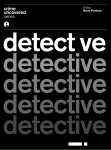 Intellect books as part of their ‘crime uncovered series’ have published two books focusing on the detective and the antihero. They’re companion books although reading them identified the clear inclination I have in my own reading towards the hero rather than the villain as I was on much more familiar territory with the first book Detective edited by Barry Forshaw. Thirteen case studies are presented featuring examples of British detectives (Morse, Dalgliesh), Scandinavian (Hole, Wallander) and other European (Montalbano and Adamsberg). I was familiar with all of them which meant reading the chapters great fun. I particularly enjoyed the case studies featuring my personal favourites – Morse and Dalgliesh and the more contemporary Sarah Lund and Saga Noren. The writing is accessible and informative and reminded me of why I love these characters in the first place.
Intellect books as part of their ‘crime uncovered series’ have published two books focusing on the detective and the antihero. They’re companion books although reading them identified the clear inclination I have in my own reading towards the hero rather than the villain as I was on much more familiar territory with the first book Detective edited by Barry Forshaw. Thirteen case studies are presented featuring examples of British detectives (Morse, Dalgliesh), Scandinavian (Hole, Wallander) and other European (Montalbano and Adamsberg). I was familiar with all of them which meant reading the chapters great fun. I particularly enjoyed the case studies featuring my personal favourites – Morse and Dalgliesh and the more contemporary Sarah Lund and Saga Noren. The writing is accessible and informative and reminded me of why I love these characters in the first place.
Antihero was a completely different read as I was now on unfamiliar territory partly due to the strong US bias of the chosen characters. I only  really know Highsmith’s Tom Ripley which was an excellent chapter. But there was enough of interest and reminded me that I really need to read some of Jim Thompson novels. It was good to see an interview with Scottish crime author, Paul Johnston, who was entertaining and articulate on the role of antihero his own novels and those of others.
really know Highsmith’s Tom Ripley which was an excellent chapter. But there was enough of interest and reminded me that I really need to read some of Jim Thompson novels. It was good to see an interview with Scottish crime author, Paul Johnston, who was entertaining and articulate on the role of antihero his own novels and those of others.
The books are aimed, I assume, at an academic audience but are also readily accessible for a readership well acquainted with crime fiction through reading for pleasure. Thanks to Intellect Books for my review copies.


November 29, 2015
Winter Reads
With all the travelling that I’ve been doing for In Bitter Chill there has been plenty of time to catch up on some crime novels sitting in my TBR pile. I’ve also been reading for the Petrona Award for translated Scandinavian crime fiction. Some of the books I’ve read have been excellent which promises for an interesting judging meeting in March.
 I’m a big fan of Hans Olav Lahlum’s writing. As a classic crime reader I naturally like the late sixties setting and the nod in both style and content to some of the great crime writers. The Catalyst Killing is set in 1970 and revolves around the murder of members of a political group. Once more it’s the dynamic between the earnest Inspector Kristiansen and the talented but housebound Patricia that makes this book sparkle. A continuing theme in Lahlum’s work is the legacy of Nazi collaboration in the Second World War. It’s made it into all his novels so far and I’d like to see something different in the next one. But Lahlum is always a hugely enjoyable read. The translation is by Kari Dickson.
I’m a big fan of Hans Olav Lahlum’s writing. As a classic crime reader I naturally like the late sixties setting and the nod in both style and content to some of the great crime writers. The Catalyst Killing is set in 1970 and revolves around the murder of members of a political group. Once more it’s the dynamic between the earnest Inspector Kristiansen and the talented but housebound Patricia that makes this book sparkle. A continuing theme in Lahlum’s work is the legacy of Nazi collaboration in the Second World War. It’s made it into all his novels so far and I’d like to see something different in the next one. But Lahlum is always a hugely enjoyable read. The translation is by Kari Dickson.
Karin Fossum is also a writer I enjoy reading but I’ve come late to her work and  I’m behind on the series featuring Inspector Sejer. The Drowned Boy is a very clever book. In an age of multiple narrators, timelines and plot strands, Fossum’s premise is simple. Did the teenage Carmen drown her young son, Tommy? The fact that the dead child had Downs Syndrome gives the narrative added poignancy. Is Carmen showing frozen grief, heartlessness or cleverly disguising an evil nature? There’s an air of unreality to the plot and of justice only slowly coming to pass. The translation was again by Kari Dickson.
I’m behind on the series featuring Inspector Sejer. The Drowned Boy is a very clever book. In an age of multiple narrators, timelines and plot strands, Fossum’s premise is simple. Did the teenage Carmen drown her young son, Tommy? The fact that the dead child had Downs Syndrome gives the narrative added poignancy. Is Carmen showing frozen grief, heartlessness or cleverly disguising an evil nature? There’s an air of unreality to the plot and of justice only slowly coming to pass. The translation was again by Kari Dickson.
 Doug Johnstone’s The Jump is a moving depiction of the aftermath of a teenager’s suicide on the boy’s mother, Ellie. After talking down another teenage boy from the Forth Road Bridge who was about to kill himself she tries to support him but plunges into a maelstrom of family secrets. It’s an unsettling read as we put ourselves in Ellie’s shoes and it’s great to read a book where the quality of the writing matches the calibre of the plot.
Doug Johnstone’s The Jump is a moving depiction of the aftermath of a teenager’s suicide on the boy’s mother, Ellie. After talking down another teenage boy from the Forth Road Bridge who was about to kill himself she tries to support him but plunges into a maelstrom of family secrets. It’s an unsettling read as we put ourselves in Ellie’s shoes and it’s great to read a book where the quality of the writing matches the calibre of the plot.
I met Alistair Fruish when I visited HMP Leicester where he is the writer in 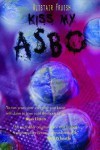 residence. Kiss my Asbo is a mix of science fiction and noir chronicling the adventures of a teenager who takes a blue pill and embarks on an angry rampage through Northampton. An unusual but entertaining read containing anger and humour in equal measure.
residence. Kiss my Asbo is a mix of science fiction and noir chronicling the adventures of a teenager who takes a blue pill and embarks on an angry rampage through Northampton. An unusual but entertaining read containing anger and humour in equal measure.







